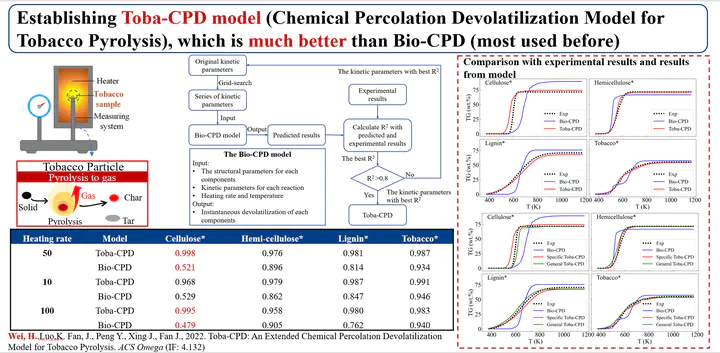 Abstract
AbstractAbstract
Tobacco features chemical compositions different from that of raw lignocellulosic biomass. Currently, the performance of network models, like Bio-Chemical Percolation Devolatilization (Bio-CPD), on tobacco pyrolysis is unclear, and only global kinetics have been proposed for tobacco devolatilization, which does not have the versatility for a wide range of heating conditions and tobacco types. To address this issue, the present work first assessed the performance of the Bio-CPD model on tobacco pyrolysis through an a priori study, which showed large deviations. Afterward, an extended Chemical Percolation Devolatilization model for tobacco pyrolysis (Toba-CPD) was developed by modifying the kinetic parameters using a grid-search optimization strategy. The process of grid-search optimization strategy is based on the kinetic parameters of the Bio-CPD model and modified with experimental results of 11 tobacco types under a wide range of heating rates. Finally, the performance of Toba-CPD was measured with experimental results which were not used during parameters optimization. Results demonstrated that the Toba-CPD models could well reproduce the pyrolysis of various tobacco types under a wide range of heating rates (